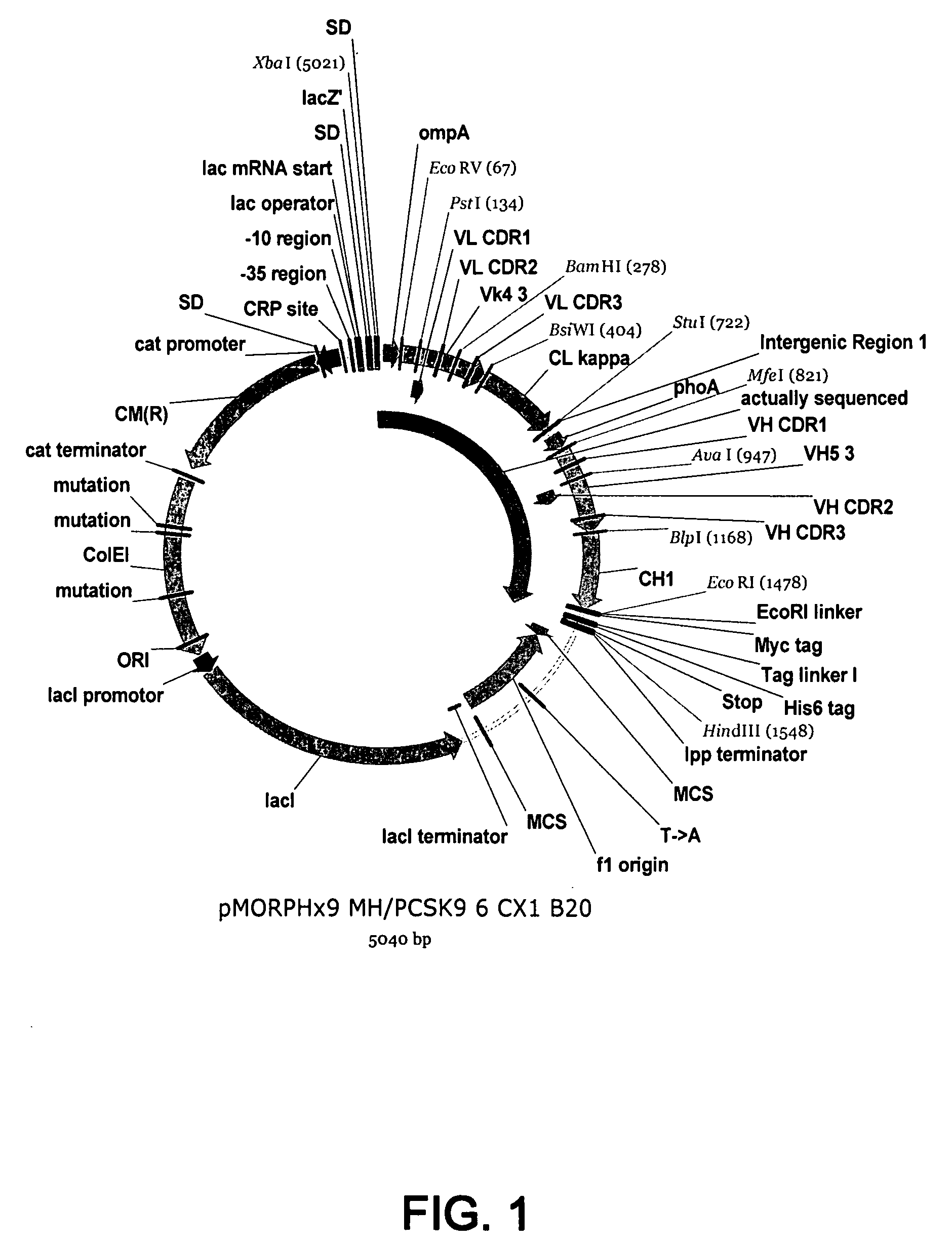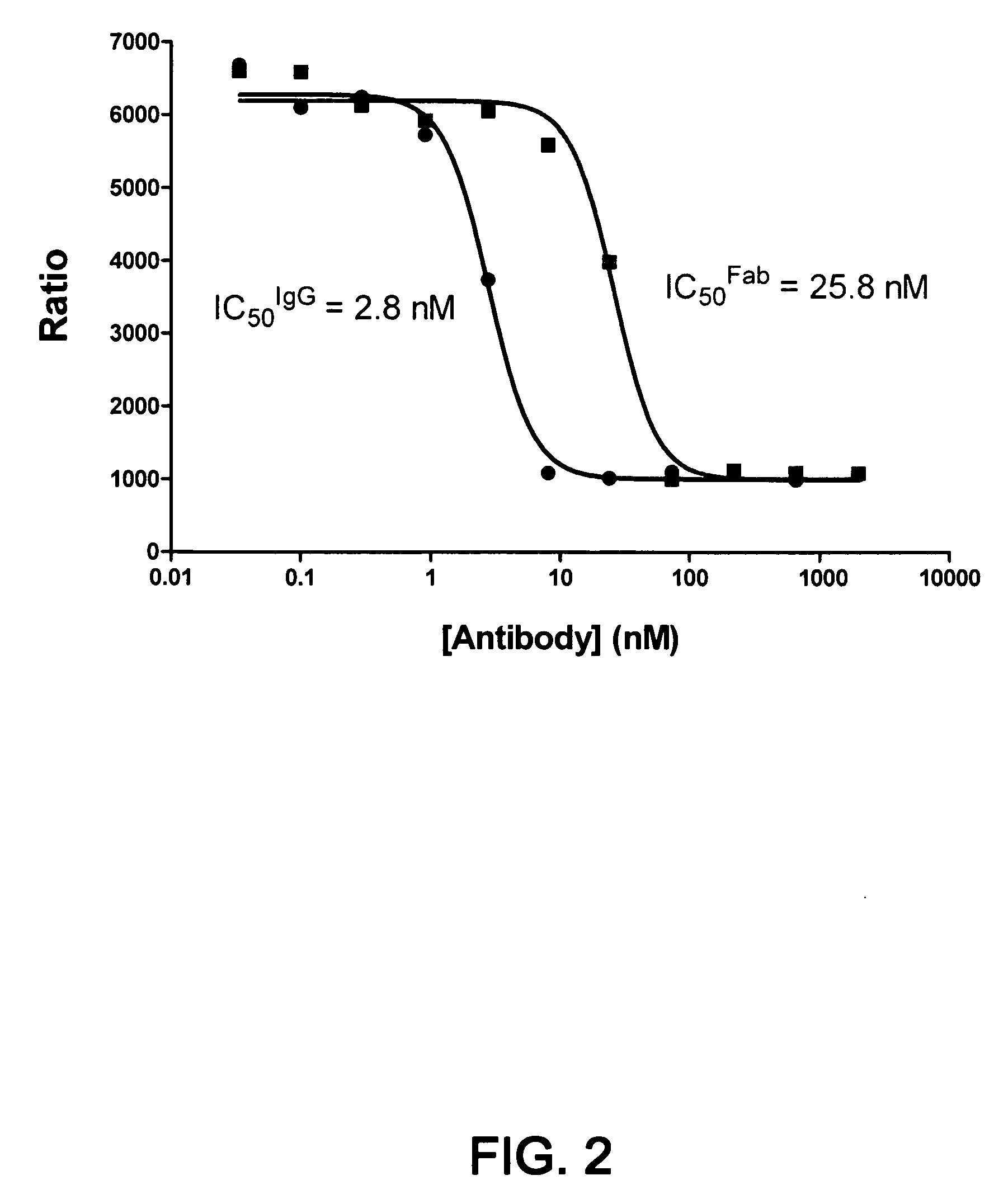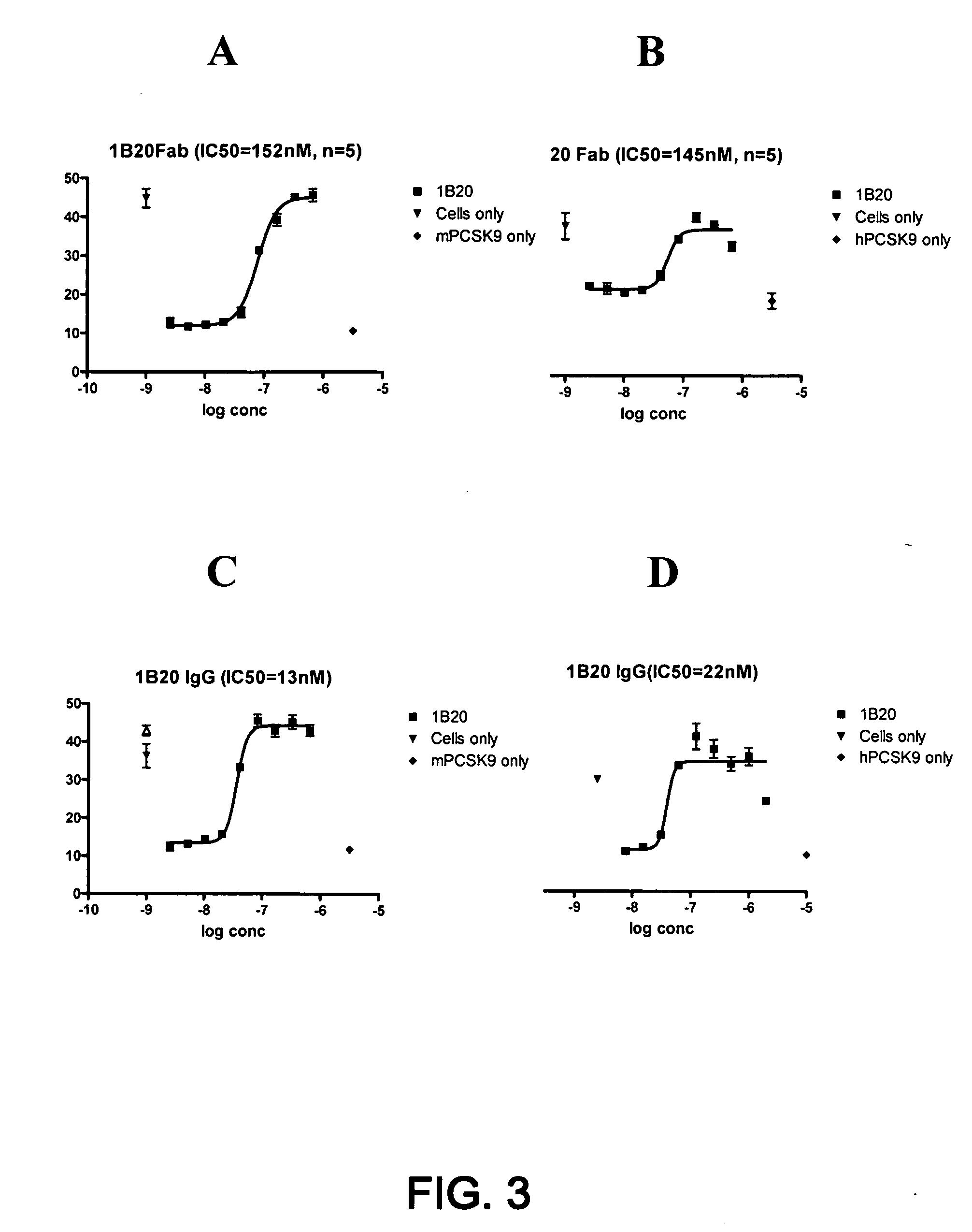1b20 pcsk9 antagonists
- Summary
- Abstract
- Description
- Claims
- Application Information
AI Technical Summary
Benefits of technology
Problems solved by technology
Method used
Image
Examples
example 1
Isolation of Recombinant Fab Display Phage 1B20
[0157]Recombinant Morphosys HuCAL Gold Fab phage display libraries (see, e.g., Knappik et al., 2000 J. Mol. Biol. 296:57-86) were panned against immobilized recombinant human and murine PCSK9 through a process which is briefly described as follows: PCSK9 protein was chemically biotinylated (Pierce, Cat. #21455) per manufacturer's instruction. The Moprhosys phage Fab display libraries were pooled and pre-absorbed three times to blocked strepavidin coated beads (Dynal beads M280). With the goal of isolating cross-reactive Fabs, human (h) and mouse (m) PCSK9 were alternated as follows: rounds 1 / 2 / 3 utilized PCSK9 from h / m / h.
[0158]For each of the three rounds of panning, the preabsorbed phage library was incubated with preblocked biotinylated PCSK9 (150 nM for first round and 100 nM for subsequent rounds) immobilized to strepavidin coated Dynal beads. The immobilized phage-PCSK9 complexes were washed sequentially with 5 quick washes with PB...
example 2
Elisa Screening of Bacterially Expressed Fabs
[0161]Cultures of individual transformants were IPTG-induced and grown overnight for Fab expression. Culture supernatants (candidate Fabs) were incubated with purified V5-, His-tagged PCSK9 protein immobilized in wells of 96-well Nunc Maxisorp plates, washed with 0.1% Tween™ 20 in PBS using a plate washer, incubated with HRP-coupled anti-Fab antibody, and washed again with PBS / Tween™ 20. Bound HRP was detected by addition of TMP substrate, and A450 values of wells were read with a plate reader.
[0162]Negative controls were included as follows:
Controls for nonspecific Fab binding on each plate were incubated with parallel expressed preparations of anti-EsB, an irrelevant Fab.
Growth medium only.
[0163]Positive controls for ELISA and Fab expression were included as follows: EsB antigen was bound to three wells of the plate and subsequently incubated with anti-EsB Fab. To control for Fabs reacting with the V5 or His tags of the recombinant PCSK...
example 3
DNA Sequence Determination of PCSK9 Elisa-Positive Fab Clones
[0164]Bacterial cultures for DNA preps were made by inoculating 1.2 ml 2×YT liquid media with chloramphenicol from master glycerol stocks of positive Fabs, and growing overnight. DNA was prepared from cell pellets centrifuged out of the overnight cultures using the Qiagen Turbo Mini preps performed on a BioRobot 9600. ABI Dye Terminator cycle sequencing was performed on the DNA with Morphosys defined sequencing primers and run on an ABI 3100 Genetic Analyzer, to obtain the DNA sequence of the Fab clones. DNA sequences were compared to each other to determine unique clone sequences and to determine light and heavy chain subtypes of the Fab clones.
PUM
| Property | Measurement | Unit |
|---|---|---|
| Fraction | aaaaa | aaaaa |
| Fraction | aaaaa | aaaaa |
| Fraction | aaaaa | aaaaa |
Abstract
Description
Claims
Application Information
 Login to View More
Login to View More - R&D
- Intellectual Property
- Life Sciences
- Materials
- Tech Scout
- Unparalleled Data Quality
- Higher Quality Content
- 60% Fewer Hallucinations
Browse by: Latest US Patents, China's latest patents, Technical Efficacy Thesaurus, Application Domain, Technology Topic, Popular Technical Reports.
© 2025 PatSnap. All rights reserved.Legal|Privacy policy|Modern Slavery Act Transparency Statement|Sitemap|About US| Contact US: help@patsnap.com



